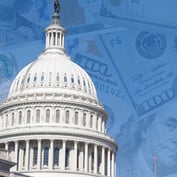NU Online News Service, Nov. 26, 3:47 p.m. – U.S. companies will have to contribute billions of dollars to their traditional defined-benefit pension plans in the next several years to rectify funding shortfalls caused by the stock market’s decline, according to a new study by consultants at Watson Wyatt Worldwide, Washington.
Only about 15% of employers had to make pension plan contributions in 2000, but that number increased to about 25% in 2001, Watson Wyatt reports. For the current year, the consulting firm estimates that about 30% of the plans will require contributions, to comply with federal pension protection laws. If current market conditions persist, that number could more than double to 65% in 2003, the firm says.
Liabilities increased as asset values declined, so fewer companies have enough funds to cover their pension liabilities. In fact, only about 40% of pension plans had more assets than plan liabilities as of Jan. 1, down from about 85% in 2000, Watson Wyatt says. If current economic conditions persist, it is likely that only about one-fifth of plans will have enough funds to fully cover liabilities in 2003, the company warns.
“Pension funding laws were originally developed to allow employers to budget pension contributions over time with flexibility, so they could fund more in good times and less in bad times,” says Kevin Wagner, a retirement practice director with Watson Wyatt. “But with numerous changes to funding rules over the past 15 years, today’s laws have precisely the opposite effect.”








 November 26, 2002 at 07:00 PM
November 26, 2002 at 07:00 PM










